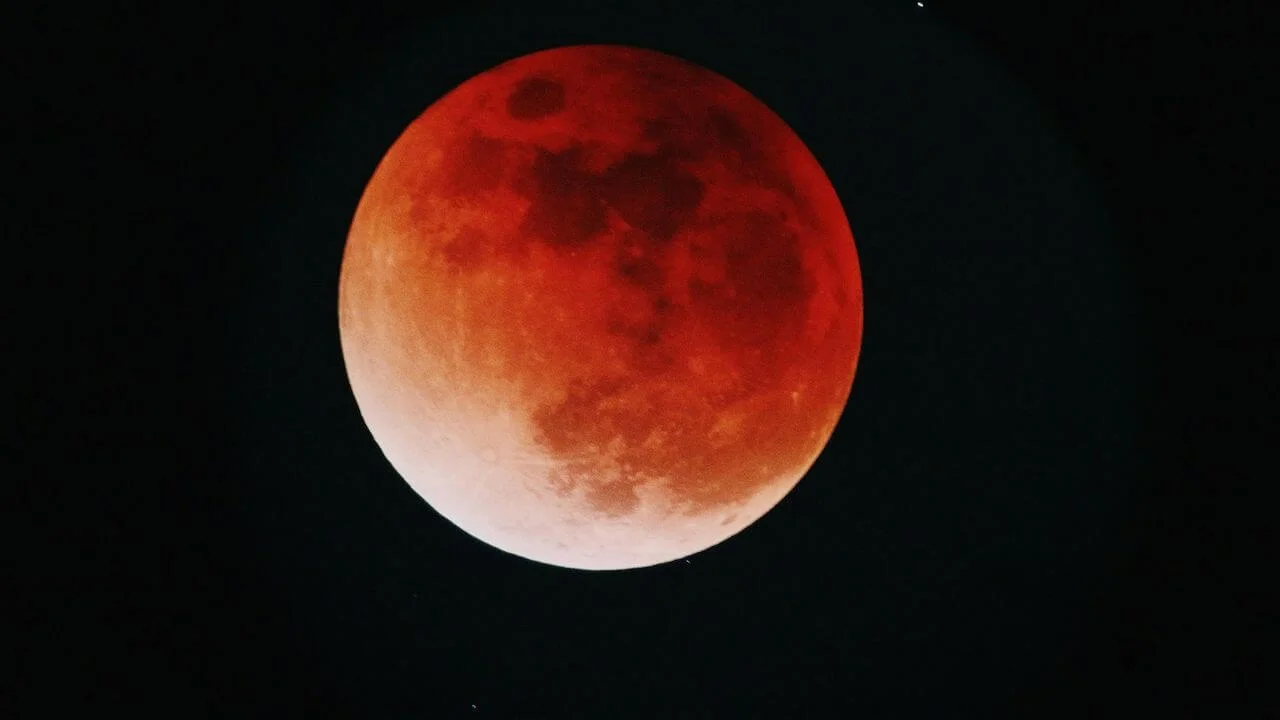Blood Moon Eclipse to Light Up UK Skies This Sunday
A rare blood moon total lunar eclipse will glow red in the night sky this Sunday, offering a dramatic celestial show for sky-watchers across the globe.

Sky enthusiasts in the UK and around the world are preparing for a striking sight this Sunday evening when a total lunar eclipse will transform the full Moon into a glowing red orb, popularly known as a blood moon.
When and where to see the eclipse
In the UK, the event will already be underway as the Moon rises. The total phase begins while the Moon is below the horizon, but by around 19:30 BST it will rise already immersed in Earth’s shadow. Observers will be able to catch the second half of the eclipse as twilight deepens.
Those in eastern Africa, the Middle East, much of Asia, and western Australia will have the best view, with the chance to watch the entire event unfold from start to finish.
The timeline of the eclipse is as follows:
- 16:28 BST (17:28 UTC): Penumbral phase begins as the Moon enters Earth’s faint outer shadow.
- 17:27 BST (18:27 UTC): Partial eclipse begins when the darker central shadow, the umbra, takes over.
- 19:11 BST (20:11 UTC): Maximum eclipse, occurring just before the Moon rises in the UK.
Dr Edward Bloomer of the Royal Observatory Greenwich explained that UK viewers may miss the deepest shades of red at the peak but will still witness an impressive cosmic alignment. “You get to see the mechanics of the solar system at play,” he said.
What causes a blood moon?
A lunar eclipse happens when Earth lines up directly between the Sun and the Moon, blocking sunlight and casting a shadow across the lunar surface.
There are three main types:
- Total lunar eclipse: The Moon is fully covered by Earth’s shadow, often appearing bright red.
- Partial lunar eclipse: Only part of the Moon enters the shadow, creating a visible dark slice.
- Penumbral lunar eclipse: A subtle dimming occurs as the Moon passes through the lighter outer shadow.
The reddish glow of a blood moon is caused by Rayleigh scattering, the same process that makes the sky appear blue and sunsets red. As sunlight filters through Earth’s atmosphere, shorter blue wavelengths scatter away, leaving red and orange hues to illuminate the Moon. Effectively, all of Earth’s sunrises and sunsets are projected onto the lunar surface at once.
Best viewing tips
To catch the eclipse at its best, find a location with a clear view of the eastern horizon before 19:30 BST. Elevated spots like hills or open viewpoints in cities provide the best chance of an unobstructed sighting.
Binoculars or telescopes will enhance the view, but they are not essential. Unlike solar eclipses, lunar eclipses are completely safe to observe with the naked eye.
Local weather will play an important role. Early forecasts suggest clearer skies over eastern parts of the UK, though conditions could shift as weather systems move in from the Atlantic. Checking the latest updates before heading out is advisable.
When is the next one?
If cloud cover spoils the show, UK observers will have another opportunity on 28 August 2026, when the next total lunar eclipse will be visible.
For now, this weekend’s blood moon promises to be one of the most memorable sky events of the year.
This article has been fact checked for accuracy, with information verified against reputable sources. Learn more about us and our editorial process.
Last reviewed on .
Article history
- Latest version
- Last updated by Dayyal Dungrela, MLT, BSc, BS
- Peer reviewed by Dr. Arjun Patel, PhD
Reference(s)
- Starr, Michelle. “Most of The World Will See an Eerie 82-Minute Blood Moon This Month.”, 3 September 2025 ScienceAlert <https://www.sciencealert.com/most-of-the-world-will-see-an-eerie-82-minute-blood-moon-this-month>.
Cite this page:
- Posted by Heather Buschman